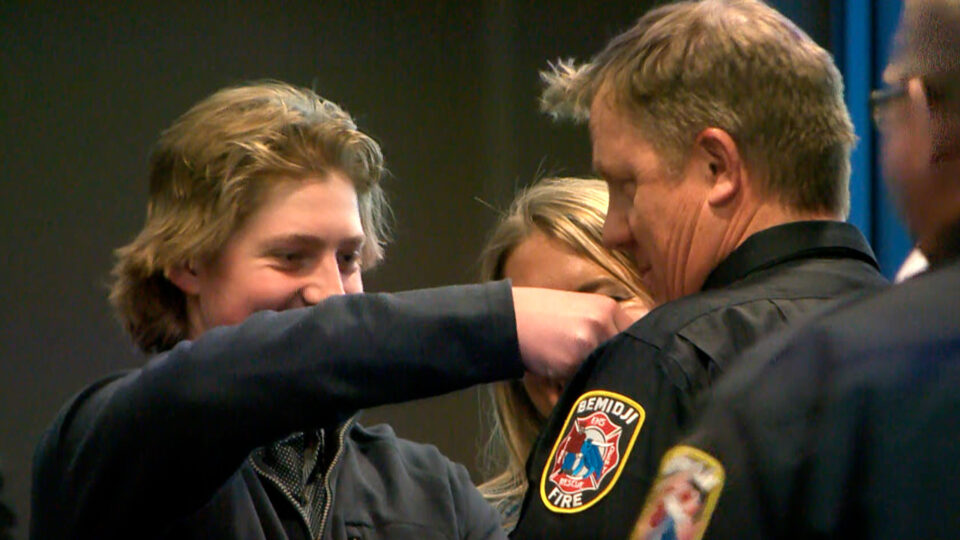Feb 4, 2022 | By: Ryan Bowler
Minnesota Attorney General to Join Investigation Into Amir Locke Shooting
MINNEAPOLIS (AP) — Minnesota Attorney General Keith Ellison will join the review of the fatal shooting of a Black man by Minneapolis police, authorities said Friday, shortly after police released body camera footage that showed SWAT team officers entering an apartment and shooting the 22-year-old man, who was wrapped in a blanket and had a gun in his hand.
Amir Locke was killed in the shooting just before 7 a.m. on Wednesday. Police said Locke pointed a loaded gun “in the direction of officers.” An incident report said he had two wounds in the chest and one in the right wrist.
Activists swiftly denounced the killing, noting that Locke wasn’t named in a search warrant.
“The mother in me is furious and sick to my stomach,” said Nekima Levy Armstrong, a prominent civil rights attorney who confronted the city’s mayor and interim police chief late Thursday night after the video’s release. “Amir never had a chance to survive that encounter with police.”
The body camera video released late Thursday showed the footage in slow motion and at regular speed. It shows an officer using a key to unlock the door and enter, followed by at least four officers in uniform and protective vests, time-stamped at about 6:48 a.m. As they enter, they repeatedly shout, “Police, search warrant!” They also shout “Hands!” and “Get on the ground!” The video shows an officer kick a sectional sofa, and Locke, who was wrapped in a blanket on the sofa, begins to move, holding a pistol. Three shots are heard, and the video ends.
The city also released a still from the video showing Locke holding the gun, his trigger finger along the side of the barrel. The top of Locke’s head is barely visible.
Hennepin County Attorney Mike Freeman said Friday that he asked Ellison to help review the case for possible charges. Ellison’s office led prosecutions of former Minneapolis Police Officer Derek Chauvin in George Floyd’s killing and of former Brooklyn Center Officer Kim Potter in the shooting of Black motorist Daunte Wright.
Levy Armstrong, whom Mayor Jacob Frey appointed last year as co-chair on a community safety work group, said Locke’s family told her Locke was a licensed gun owner with a concealed carry permit, that he didn’t live in the apartment, that police had not been looking for him and that he wasn’t one of three suspects named in the warrant.
A gun-rights group highlighted the timing of the raid, saying it appeared from the video that Locke had been awakened by a confusing array of commands from multiple officers pointing lights and guns at him.
“Mr. Locke did what many of us might do in the same confusing circumstances, he reached for a legal means of self-defense while he sought to understand what was happening,” said Rob Doar, a spokesman for the Minnesota Gun Owners Caucus.
Interim Chief Amelia Huffman said during a news conference after the video was released that Locke isn’t named in the warrants. She said it isn’t clear how or whether Locke is connected to the homicide investigation, which she said is under the control of St. Paul police. A spokesman for the St. Paul Police Department said he could not comment because the homicide investigation is ongoing.
The search warrants that led the SWAT team to enter the apartment early Wednesday were still not public as of Friday morning. But a search warrant filed by state agents investigating the shooting was filed. It said that the initial search warrants “were being executed for a homicide suspect who was apparently located” at the building where the shooting took place.
Frey said the video “raises about as many questions as it does answers” and said the city was pursuing answers “as quickly as possible and in transparent fashion” through investigations including one by the state Bureau of Criminal Apprehension.
Huffman said the officer, Mark Hanneman, was in a difficult position.
“The still shot shows the image of the firearm in the subject’s hands, at the best possible moment when the lighting was fully on him. That’s the moment when the officer had to make a split-second decision to assess the circumstances and to determine whether he felt like there was an articulable threat, that the threat was of imminent harm, great bodily harm or death, and that he needed to take action right then to protect himself and his partners,” she said.
Hanneman was hired in 2015. Records released by the city showed three complaints, all closed without discipline, but gave no details. Data on the website of the citizen group Communities United Against Police Brutality showed a fourth complaint, in 2018, that remains open. No details were given.
Levy Armstrong and other activists angrily confronted the mayor and interim chief at the news conference. Levy Armstrong called the city’s release of information “the anatomy of a cover-up.” Another activist blasted the pair for a news release Wednesday that referred to Locke as a “suspect.”
Locke’s mother, Karen Locke, declined to comment to The Associated Press Thursday, referring questions to the family’s attorney, Ben Crump. The civil rights lawyer has won huge settlements for the families of several people killed by police, including $27 million for the family of George Floyd. Crump and the family, who were shown the video before it was publicly released, planned a news conference Friday.
In a statement, Crump compared Locke’s shooting to the botched raid in which officers killed Breonna Taylor in her home in Louisville, Kentucky, in 2020, which led to calls for change nationwide.
“Like the case of Breonna Taylor, the tragic killing of Amir Locke shows a pattern of no-knock warrants having deadly consequences for Black Americans. This is yet another example of why we need to put an end to these kinds of search warrants so that one day, Black Americans will be able to sleep safely in their beds at night,” Crump said.
Huffman said that the city had both knock and no-knock warrants.
Several state lawmakers from Minneapolis had joined Levy Armstrong and others in calling for body camera footage to be made public. In a letter to Huffman and Frey, they insisted that “one path to establishing trust between the police department and the community is greater transparency and accountability of police actions.”
The city released some reports and photographs of the gun recovered from the scene on its website Wednesday.
Minneapolis city leaders and law enforcement officials typically withhold police body camera and dashboard camera videos for weeks or even months, citing ongoing investigations as justification.
But not always.
In December 2020, after an officer shot Dolal Idd at a gas station on Minneapolis’ south side, the city released video the next day, saying it showed that the man had fired at officers first. And last April, police in suburban Brooklyn Center released video the day after the shooting of Daunte Wright, saying it showed that Officer Kim Potter apparently intended to use her Taser but drew her gun by accident. Potter was convicted of manslaughter in December.







